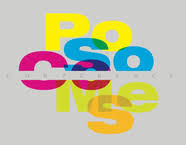At the 1st PoSoCoMes – Memory Studies Association Working Group conference titled Post-Socialist Memory in Global Perspective: Postcolonialism, Post-transition, Post-trauma (September 21 – October 1, 2020), organized online due to the COVID-19 pandemic, two colleagues from Blinken OSA gave presentations: Oksana Sarkisova and Anastasia Felcher.
Oksana Sarkisova’s lecture, "The Limits of the Visible: Silences, Oblivion, and Soviet-time Vernacular Photography,” explored how domestic images facilitate and format a generational transition. While photographs are perceived as formative for evoking memories and shaping individual narratives, they may not contain visible markers of negative or traumatic experiences and may accommodate multiple silences, which, however, do not diminish their power for the image owners. The multiplicity of pasts and futures projected on photographic images makes them open to alternative interpretations. By revealing the idiosyncrasies of gestures and expressions that underlie complexities of long-gone pasts, the photographs immeasurably expand the significance of the events to which they refer. The presentation was based on in-depth interviews with 54 Russian families over their photographic collections, and discussed the photographic ability to invoke “what is not shown.”
Sarkisova also moderated a plenary discussion with film director Dragoş Turea, following the screening of his documentary The Soviet Garden (2019). The discussion focused on the background research for the film, the practices of the Soviet-time “atomic gardening,” and the entanglement of science and politics during the Cold War.
Titled “Research Methodology on Writer Museum Network(s) across Post-Soviet Countries: Pushkin Museums after 1991,” Anastasia Felcher’s presentation was part of the conference panel Museums and Memory Politics in Eastern Europe: Comparative and Transnational Perspectives. She explored multiple ways in which the dissolution of the Soviet Union and further transition in the region impacted the transformation of cultural heritage sites that could be labeled simultaneously as Russian Imperial and Soviet; Pushkin biography museums outside Russia, in Vilnius, Chisinau, Odesa, and Hurzuf. As the post-Soviet transition reformulated the geographical metaphor of the center and periphery for the entire region, Pushkin museums lost their prestige and faced certain disregard and lack of funding. However, the developments of the latest decades and the reintroduction of Pushkin and his biography museums into the larger framework of the “Russian world,” indicate the flexibility of the canon. The transnational reach of these Pushkin museums provides an opportunity to better understand the relationship between authorial fame, cultural symbolism, and identity formation.


